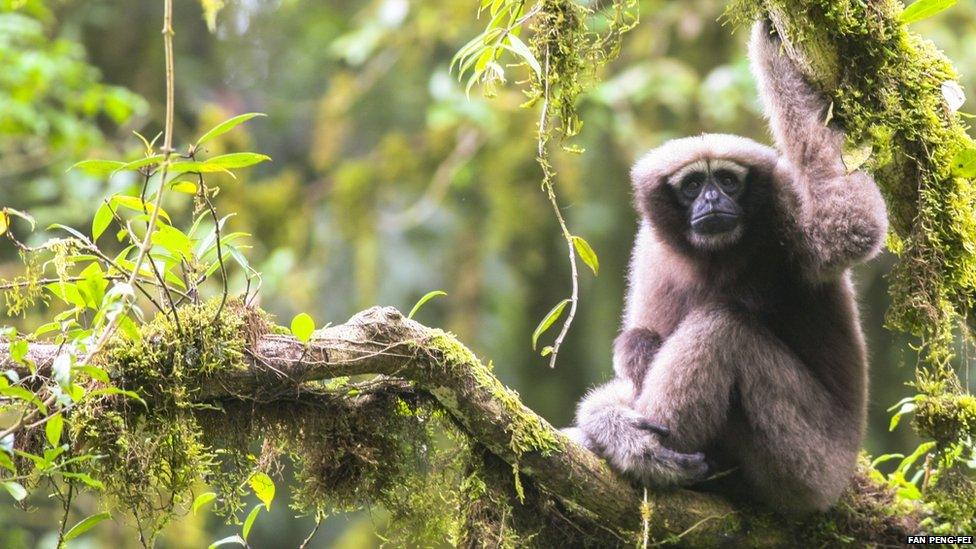'Star Wars gibbon' is new primate species
- Published

The gibbons live high up in the canopies of the tropical rainforests of China
A gibbon living in the tropical forests of south west China is a new species of primate, scientists have concluded.
The animal has been studied for some time, but new research confirms it is different from all other gibbons.
It has been named the Skywalker hoolock gibbon - partly because the Chinese characters of its scientific name mean "Heaven's movement" but also because the scientists are fans of Star Wars.
The study is published in the .
Dr Sam Turvey, from the Zoological Society of London, who was part of the team studying the apes, told 91热爆 News: "In this area, so many species have declined or gone extinct because of habitat loss, hunting and general human overpopulation.
"So it's an absolute privilege to see something as special and as rare as a gibbon in a canopy in a Chinese rainforest, and especially when it turns out that the gibbons are actually a new species previously unrecognised by science."
The researchers began to suspect the Yunnan Province gibbons were different
Hoolock gibbons are found in Bangladesh, India, China and Myanmar. They spend most of their time living in the treetops, swinging through the forests with their forelimbs, rarely spending any time on the ground.
But the research team - led by Fan Peng-Fei from Sun Yat-sen University in China - started to suspect that the animals they were studying in China's Yunnan Province were unusual.
All hoolock gibbons have white eyebrows and some have white beards - but the Chinese primates' markings differed in appearance.
Their songs, which they use to bond with other gibbons and to mark out their territory, also had an unusual ring.
Actor Mark Hamill tweeted the news
So the team carried out a full physical and genetic comparison with other gibbons, which confirmed that the primates were indeed a different species.
They have been given the scientific name of Hoolock tianxing - but their common name is now the Skywalker hoolock gibbon, thanks to the scientists' taste in films.
The animals are now known as Skywalker hoolock gibbons
Dr Turvey said the team had been studying the animals in the Gaoligongshan nature reserve, but it was not easy.
"It's difficult to get into the reserve. You have to hike up to above 2,500m to find the gibbons. That's where the good quality forest usually starts - everywhere below there has been logged.
"Then you have to wake up really early in the morning and you listen out for the haunting song of the gibbons, which carries in the forest canopy.
"And when you hear it, you rush through the mud and the mist, and run for hundreds of metres to try and catch up with these gibbons."
The researchers estimate that there are about 200 of the Skywalker gibbons living in China - and also some living in neighbouring Myanmar, although the population size there is currently unknown.
The team warns that the primates are at risk of extinction.
"The low number of surviving animals and the threat they face from habitat loss, habitat fragmentation and hunting means we think they should be classified as an endangered species," said Dr Turvey.
In response to the news, actor Mark Hamill - the original Luke Skywalker - said on Twitter that he was so proud to have a new jungle Jedi named after his character.
Follow Rebecca